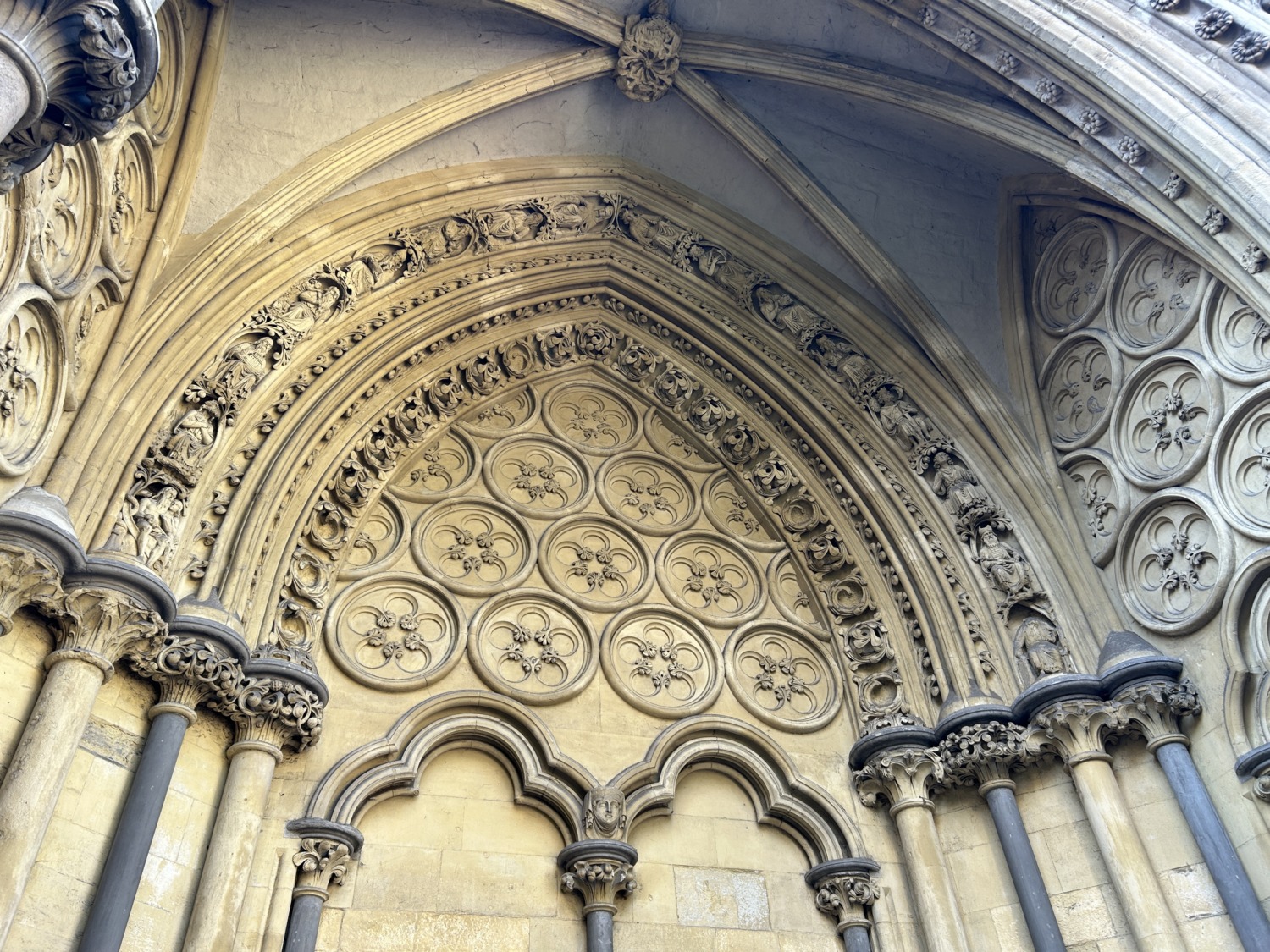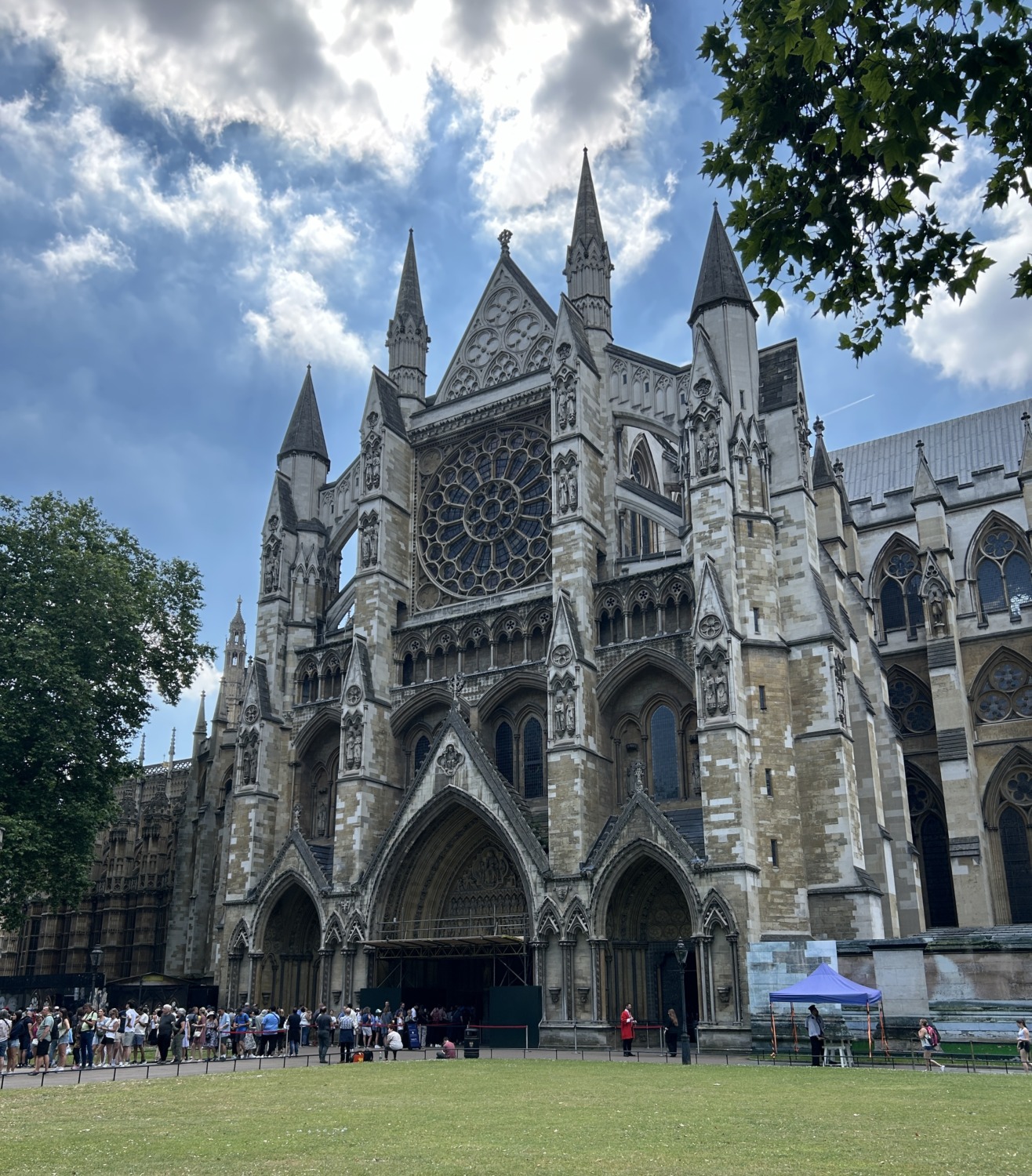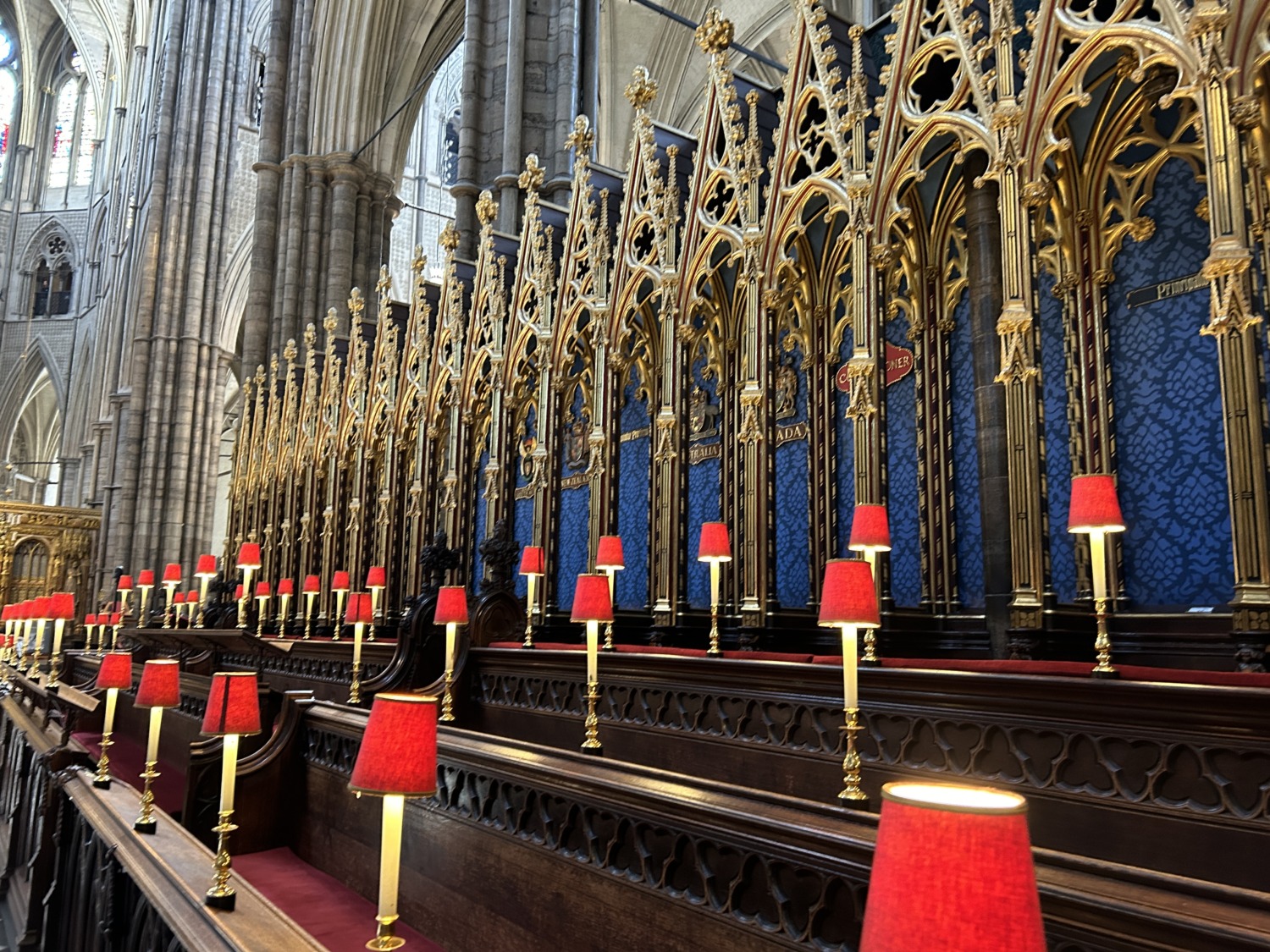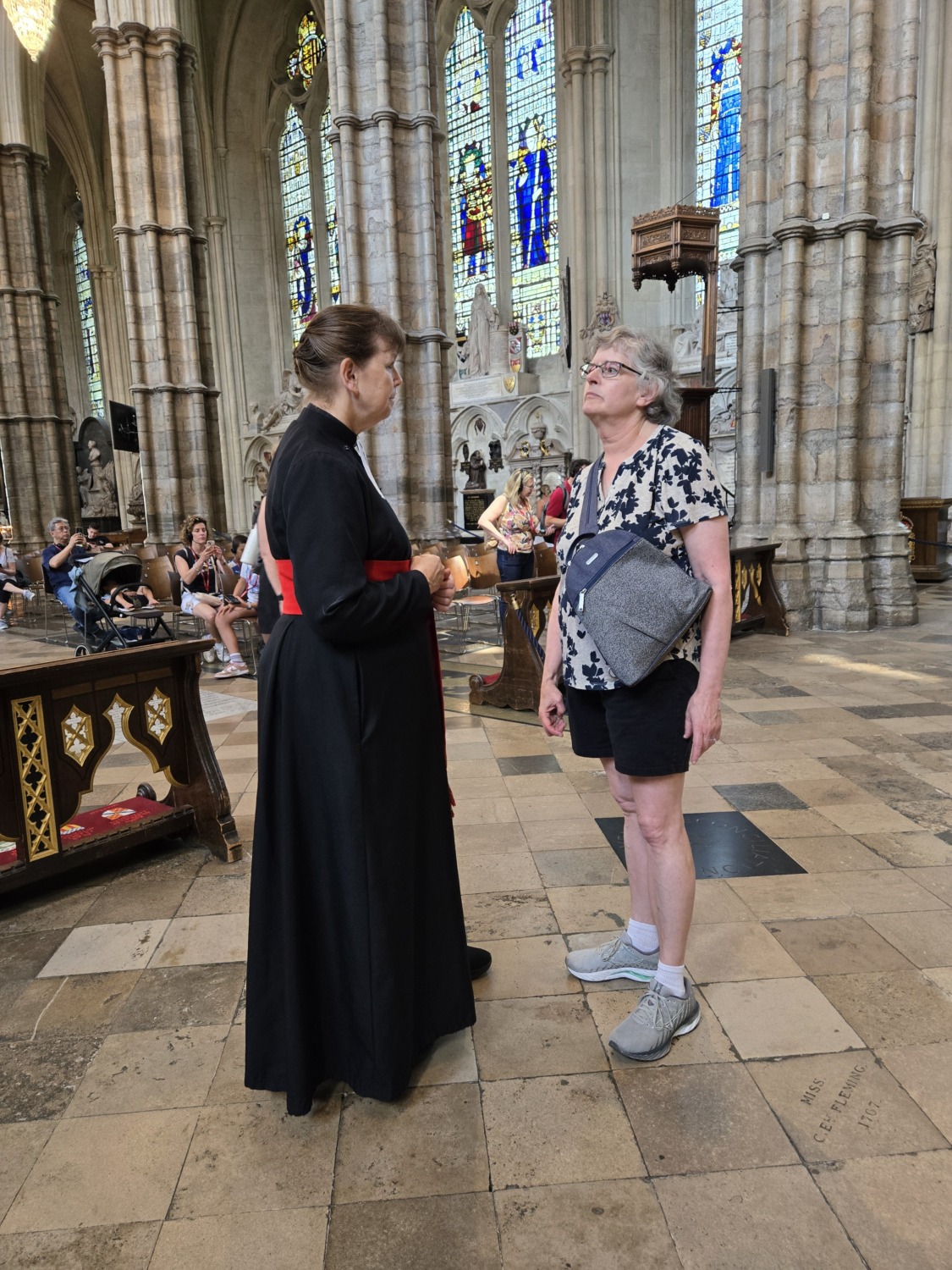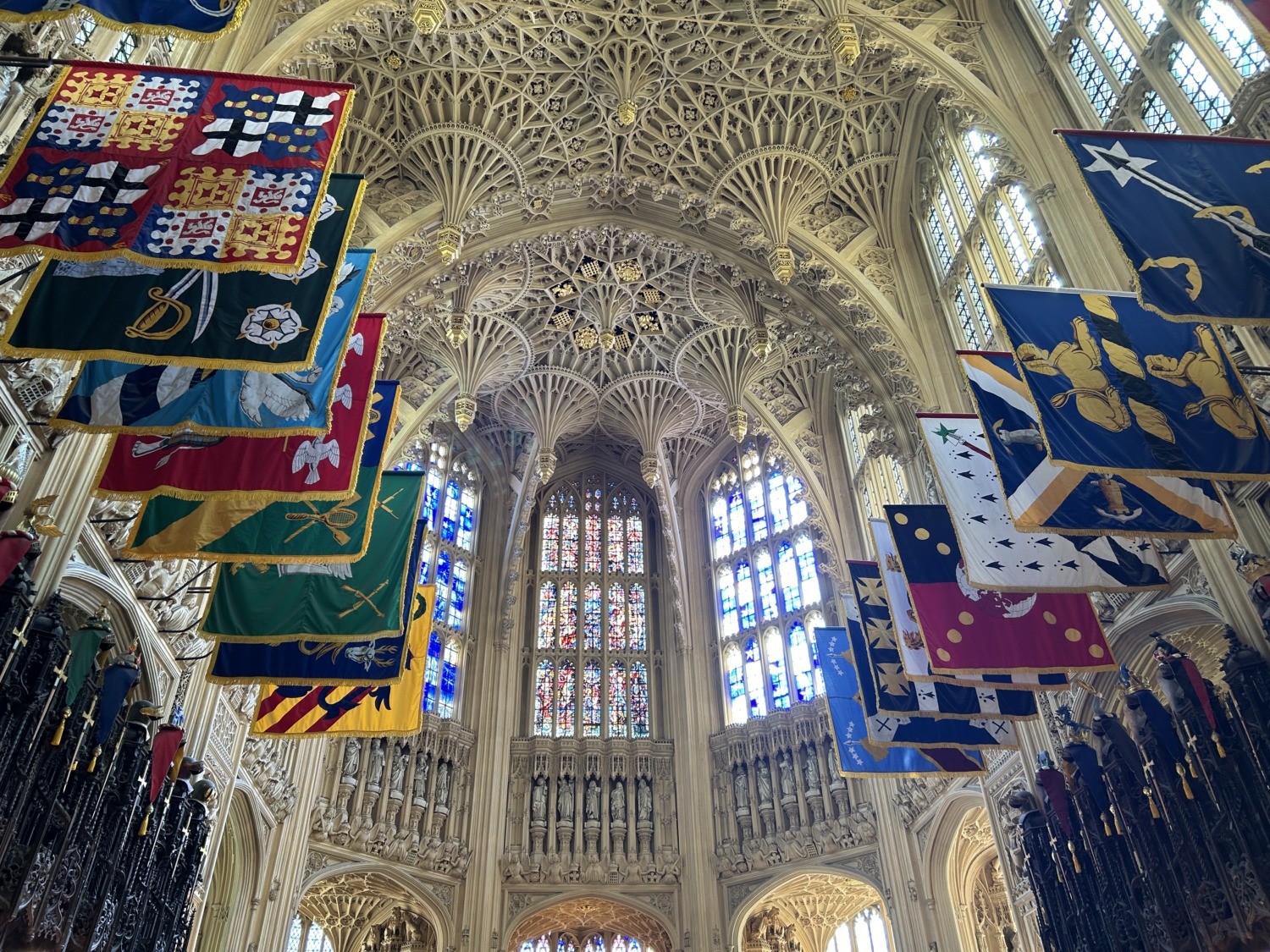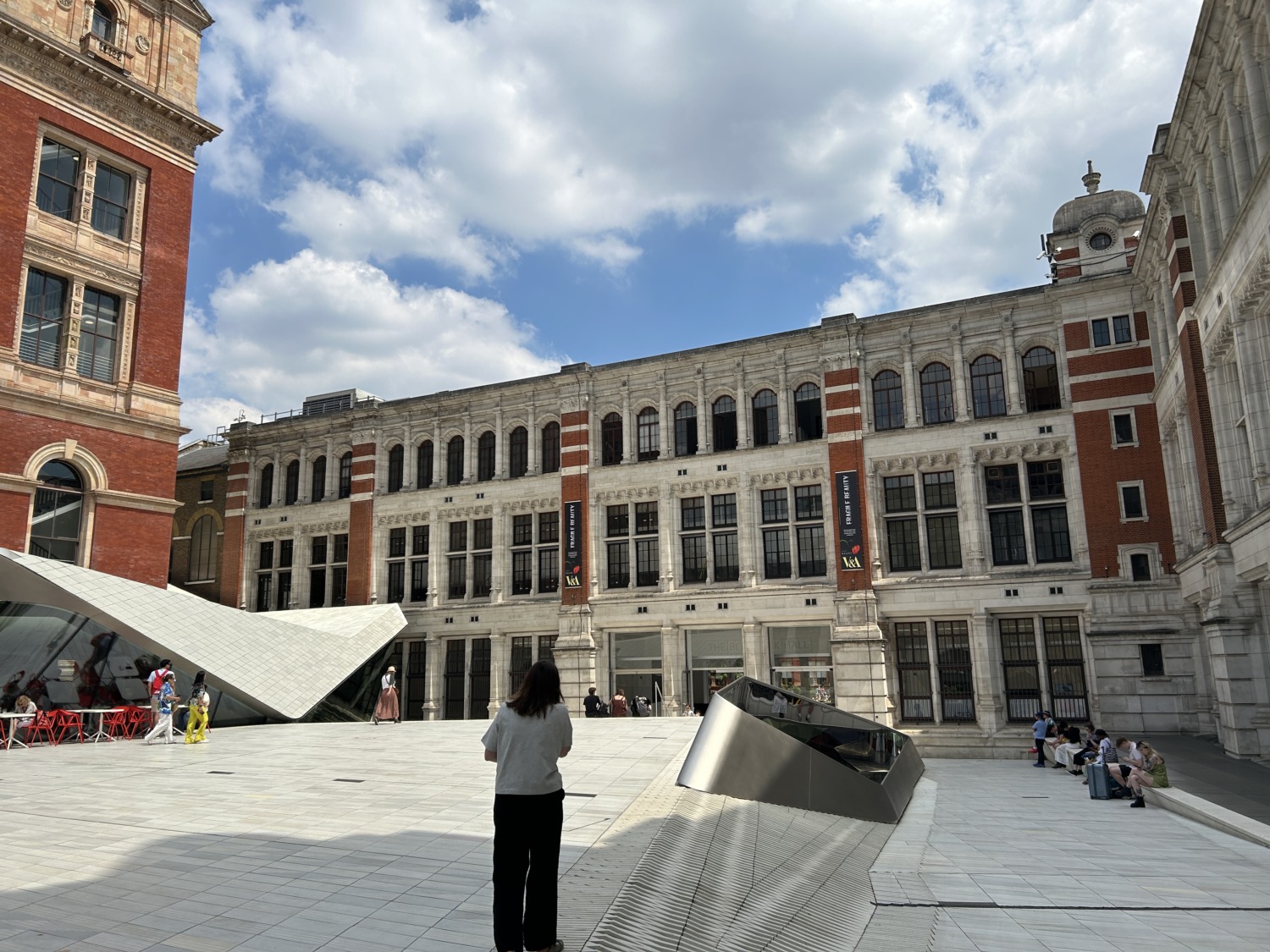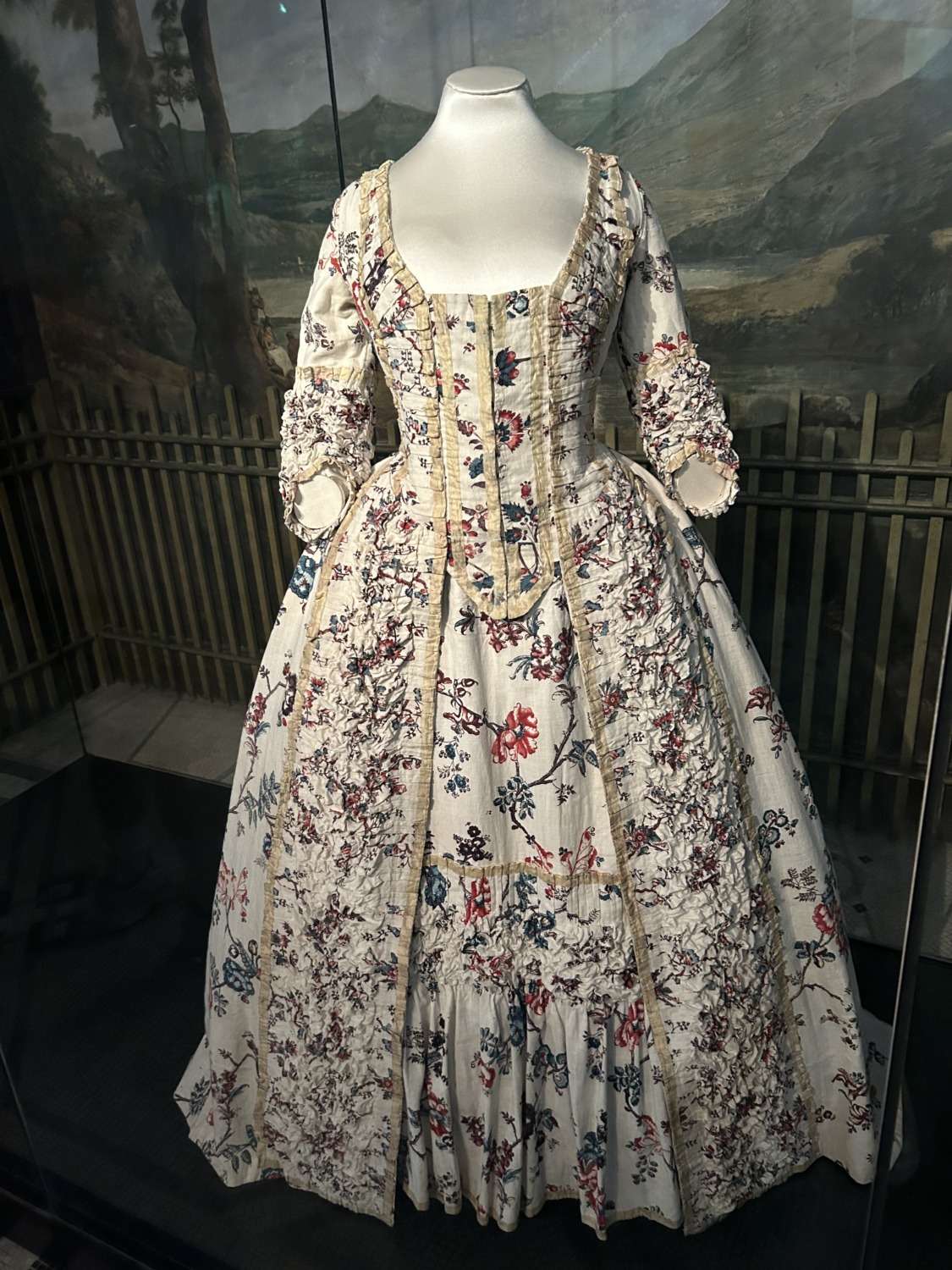Westminster Abbey is the 13th most visited tourist site in London. That ranking surprised me because it felt like it was probably #1 when Tom and I visited there during our time in London. The #1 site, in case you are wondering, is the British Museum. The Tower of London gets a million more visitors per year than Westminster Abbey.
Westminster Abbey might be #13, but it had plenty of visitors the day Tom and I were there. I tried to get tickets with a timed entry online, but they were sold out. The abbey was only open until 1 p.m. the day we visited, so I wonder if that had something to do with how many people were there in the morning. Tom and I stood in line for 45 minutes in order to reach the ticket booth. They weren’t limiting the number of people who could buy tickets, just the number who could buy them online. Fortunately our time of waiting was mostly in the shade.
Waiting in line also gave us time to get a great view of the House of Parliament, Big Ben, and the outside of Westminster Abbey. By the time we got inside, we were so used to waiting in line with the same folks, that it was easy to follow them through the church.
An abbey housing Benedictine monks was on the site by the mid-10th century. The church got its first large building around 1040, commissioned by King Edward the Confessor, who is buried inside. Construction of the present church began in 1245 on the orders of Henry III. Westminster Abbey, the Palace of Westminster and St. Margaret’s Church became a UNESCO World Heritage site in 1987 because of their historic and symbolic significance.
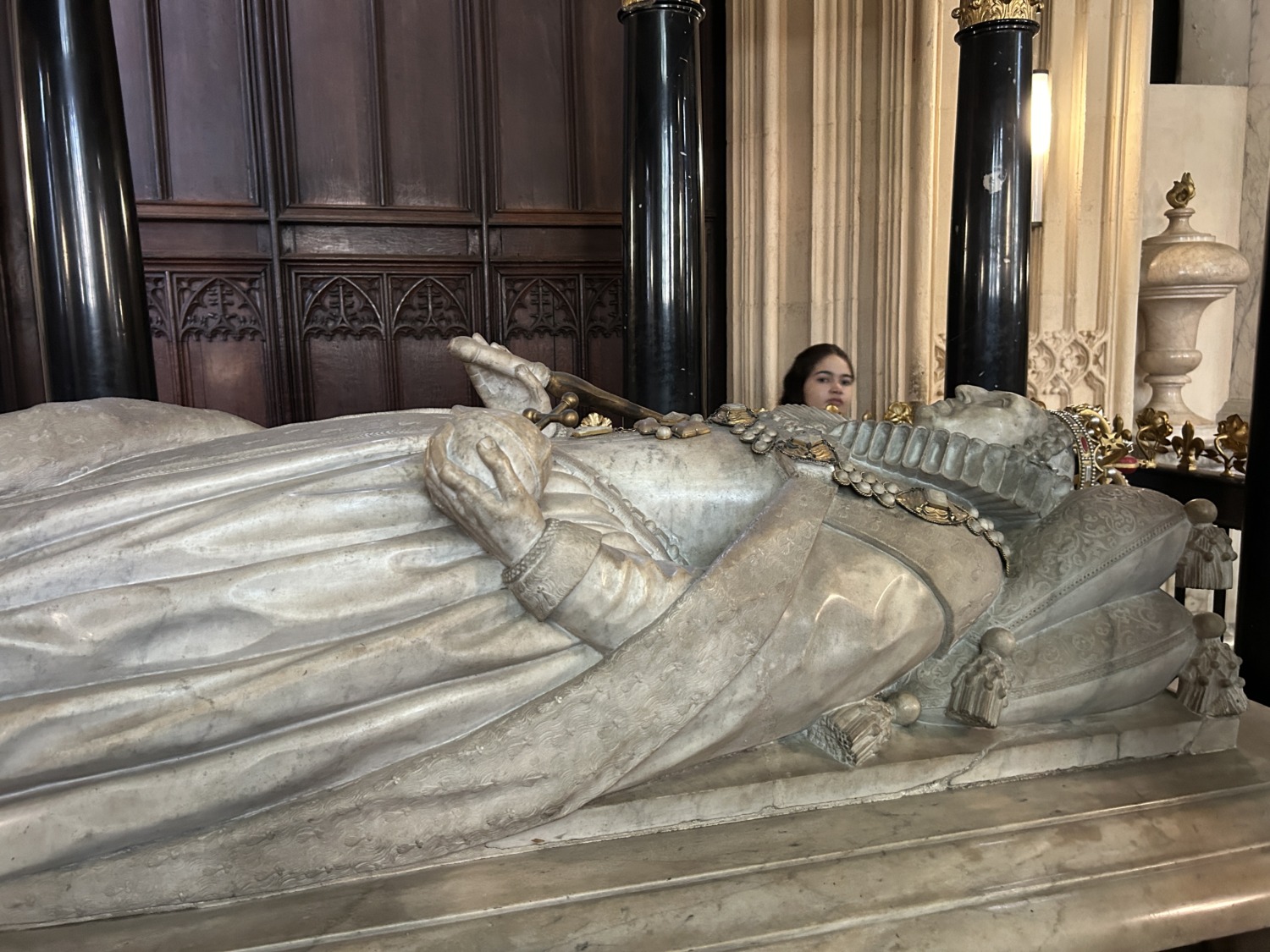
The Gothic church has been the location of the coronations of 40 English and British monarchs. It is a burial site for 18 English, Scottish, and British monarchs. At least 16 royal weddings have taken place at the abbey since 1100. The abbey is the burial site of more than 3,300 people, many prominent in British history: monarchs, prime ministers, poets, scientists, military leaders, and the Unknown Warrior.
The list of people buried in Westminster Abbey reads like a Who’s Who of British history. Robert and Elizabeth Barrett Browning. David Livingstone. Charles Dickens. Isaac Newton. Priests, organists, and even servants who worked at the abbey are buried there. I found one stone that marked the grave of 26 monks who died of the plague in 1348. Not to mention the kings and queens.
Tom and I moved with the queue around Westminster Abbey and I took lots of pictures. We found the graves of most of the kings and queens. Some of them had elaborate tombs and grave markers such as Elizabeth I and Mary, Queen of Scots. Others were only marked by an engraved marble stone in the floor.
The most elaborate tomb markers signified the richest people. Some of them were huge – life-sized – with servants and spouses and children all weeping beside the fallen hero. Others were just a simple stone on the wall. All this focus on the graves took some of the emphasis off the religious nature of Westminster Abbey. There is a modern congregation that worships in this place and the priests of the abbey offer several services a day. It would have been nice to attend Evensong at the abbey.
I got the chance to talk to one of the priests. She was walking around in the chancel area and I asked her about serving at the abbey. She said it was like a lot of modern congregations in historic buildings – a balancing act between being open to the public and continuing to worship and do ministry. We had a nice conversation about the challenges of ministry in any building.
I was particularly impressed by the clergy seating area. In the chancel there is the quire, where the choir sits, and then, closer to the altar, is the area where each of the bishops and archbishops of the Church of England sits during affairs of state. Each of them has a banner over their chair, representing their diocese. Very cool.
Another thing that made an impression on me was the place where the coronation chair is placed when a king or queen is being crowned. They had a picture of a very young Queen Elizabeth II at her coronation in that place. I have always been an admirer of Queen Elizabeth II and to be in that spot felt very timeless. Tom felt the same kind of connection when he stood at George II’s burial spot. George II is someone that Tom talks about frequently when he is at Fort Frederica.
After drinking in the history and atmosphere of Westminster Abbey, Tom and I hopped on the Tube to go to South Kensington. We found a little café for lunch and then headed to the Victoria and Albert Museum. The Victoria and Albert has one of the most impressive historic textile collections of any museum and I wanted to see it. A very small percentage of the textiles are on display, but what I saw was absorbing.
The Victoria and Albert Museum tries to balance modern and historical artisanship. There is an emphasis on creativity as expressed through objects. Tom and I wandered through the exhibitions, admiring various over-the-top pieces. Tom liked the extravagant ironwork. I liked the tapestries and embroidered clothing. We stayed a couple of hours, at which point we had seen enough of the beautiful artifacts left by the richest people throughout the history of the world.
We took the Tube back to Victoria Station and walked back to our hotel by way of the grocery store where we picked up food for supper. I was thankful for the balance of these days. We saw some awe-inspiring sights, but still got back to the hotel in time for a quiet and relaxing evening.


